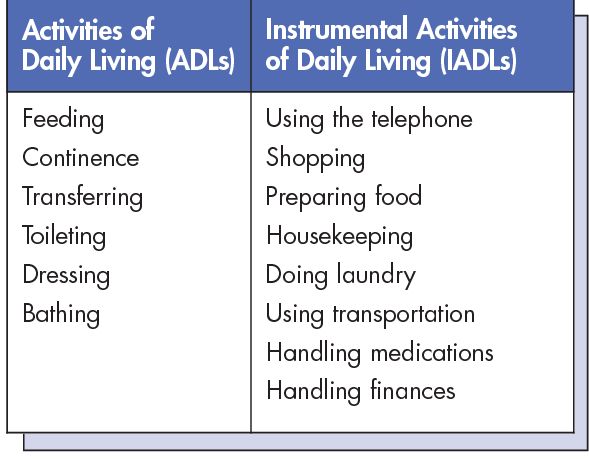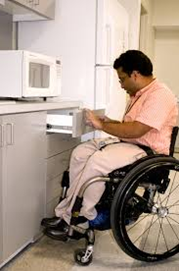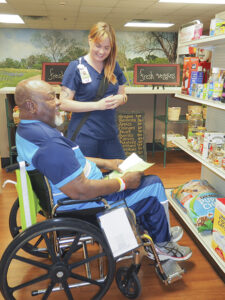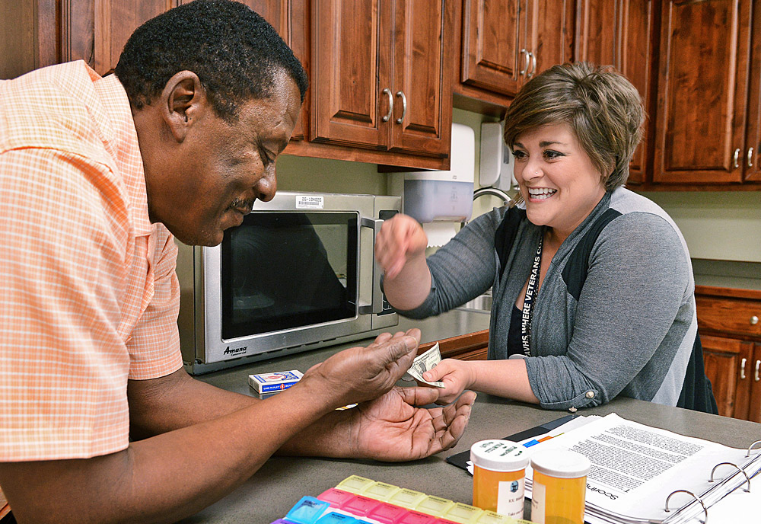Instrumental Activities of Daily Living (IADLs)



Instrumental Activities of Daily Living, or IADLs, are tasks that a person must complete to live independently in the community.
Some of the more common IADL tasks include:
• Meal preparation – includes tasks involved in preparing both cold and hot foods.
• Household cleaning – includes sweeping, vacuuming, dusting, washing dishes, cleaning bathrooms, etc.
• Yard work – includes mowing grass, raking leaves, pruning shrubs, and other tasks.
• Clothing care/Laundry – includes washing, drying, folding and putting away clothing.
• Time management – includes telling time, reading a calendar, following a schedule and making appointments.
• Using communication devices – includes using a landline phone, cellphone, computer, intercom, and medical alert device.
• Money management – includes counting and using money, managing bank accounts, and following a budget.
• Community mobility – includes arranging for transportation, using public transportation, and locating various places in the community.
• Shopping – includes identifying which stores sell specific goods, making shopping lists, and planning routes for shopping trips.
• Managing medications – includes taking medications as prescribed, learning which medications treat which conditions, learning about possible side effects, and discussing medications with health care providers.
This is not an inclusive list, but includes many of the tasks that occupational therapists encounter when providing treatment to patients.
Evaluation of IADL Skills
IADL skills are usually evaluated through observation and checklist style assessments. Some standardized tests are also used. The following chart reviews some formal assessments for IADL skills.
| Name of Test | Author and Year of Publication | Type of Test and Target Population | Description |
| Lawton Instrumental Activities of Daily Living Scale | M.P. Lawton and E.M. Brody, 1969 | Self report or surrogate report through interview. Designed for elderly adults. | IADL checklist that assigns numerical points of 1 or 0 to each item depending on the patient’s self reported level of performance, with a total possible score of 8. The scale addresses ability to use the telephone, shopping, food preparation, housekeeping, laundry, mode of transportation, responsibility for own medications, and ability to handle finances. |
| Independent Living Scales | Patricia Anderten Loeb, 1996 | Standardized test, adults age 65 and older | A standardized, performance-based test that requires the patient to complete tasks in 5 IADL areas: memory/orientation, managing money, managing home and transportation, health and safety, and social adjustment. Norms are included for adults age 65 and over. |
| Evaluation of Living Skills, 4th edition | Linda Kohlman Thompson and Regi Robnett, 2016 | Standardized test, norms for adults. | A standardized performance-based test that requires the patient to complete tasks in the following areas: self care, safety and health, money management, transportation and telephone, work and leisure. The 4th edition has been revised to include modern pictures and communication devices, i.e. cell phones. |
| Assessment of Motor and Process Skills (AMPS) | A.G. Fisher, 2006 (original publication 1995) | Observational checklist, designed for all ages. | An assessment based on observation of patient selected tasks. The therapist rates completion of the tasks based on 16 motor and 20 process skills. The assessment evaluates performance during both ADL and IADL skills. The IADL tasks included are meal preparation, home maintenance, and laundry. |
The following videos discuss and demonstrate the administration of IADL evaluations:
Graded Treatment of IADL Skills

IADL training is usually introduced after the patient has made progress in ADL training and shows potential to be able to live independently. Occupational therapy treatment for IADLs is provided in both rehabilitation settings where patients are working to regain the ability to complete IADL tasks, and in school or transitional settings where teenagers and young adults are learning how to complete IADL tasks for the first time.
Treatment of IADL skills is usually completed using a top-down approach, where the patient’s ability to participate in the functional task is used as the basis for grading activities. If a patient’s ability is low, training in the tasks will start with basic tasks. If a patient’s ability is higher, tasks will be introduced that are more complex. As patients gain the skills necessary to complete basic tasks, more complex tasks are introduced in a graded sequence.
The following chart will give examples of how to grade IADL activities that build skills sequentially from basic to more advanced. The chart is organized with 5 sequential activities for each task, with level 1 being the most basic and level 5 being the most advanced. The tasks are graded according to the level of cognitive and perceptual function required as well as physical ability.
The tasks presented are examples and are not the only tasks involved in the area listed.
| Level 1 | Level 2 | Level 3 | Level 4 | Level 5 | |
| Meal Preparation | Access a prepared meal. | Prepare a cold food item. | Prepare a hot beverage, soup, or heat up a prepared dish. | Prepare a hot one dish meal. | Prepare a hot multi-dish meal. |
| House Cleaning | Wipe off kitchen table and countertops. | Pick up and put away clutter. | Take out garbage. | Vacuuming floors without moving furniture. | Dusting or vacuuming cobwebs in corners. |
| Laundry | Identify when clothes are clean vs. dirty. | Put dirty clothes in clothes hamper; put clean clothes in drawers or closet. | Fold clean clothes before putting away. | Wash clothes using a washing machine and dryer. | Sort clothes in preparation for washing. |
| Time Management | Tell time on a digital clock. | Tell time on an analog clock. | Recognize and prepare for times for routine activities, i.e. lunch time. | Recognize and prepare for scheduled appointments. | Schedule, record, and prepare for appointments. |
| Money Management | Recognize money and its purpose. | Differentiate between different types of money and use exact change to make a purchase. | Prepare to make a cash purchase and correctly count change from the purchase. | Make cash deposits and withdrawals from a bank account. | Monitor balances in checking and savings accounts. |
| Shopping | Identify the correct store for the planned purchase, i.e. grocery store for food, etc. | Plan for and purchase a single item. | Make a shopping list and purchase items from the list at a single store. | Make a shopping list and purchase items at multiple stores. | Compare prices for desired items between stores and find the best price. |
| Using communication devices | Talking on the telephone with assistance to place the call. | Dialing a pre-pro grammed telephone number. | Dialing a familiar telephone number. | Looking up and dialing an unfamiliar telephone number. | Calling directory assistance to locate a telephone number. |
| Managing Medications | Taking pills prepared by a caregiver. | Taking pills at the correct time of day from a pill organizer that has been set up by a caregiver. | Taking pills at the correct time of day without assistance from a caregiver. | Identifying prescriptions and what conditions they treat. Recognizing when refills are required. | Discussing prescription options and side-effects with the doctor and pharmacist. |
| Community Mobility | Ride on the bus with a caregiver. | Ride on the bus with assistance from others to board the correct bus and get off at the correct stop. | Ride on the bus to familiar locations, request the correct stop without assistance. | Ride on the bus to an unfamiliar location without assistance. | Utilize bus schedules to plan a route to a location using more than one bus. |
IADL Videos
The following videos demonstrate task analysis and/or demonstration of IADL tasks.
References
* Fisher, A. G. (2006a). Assessment of Motor and Process Skills: Vol. 1. Development, standardization, and administration manual (6th ed.). Fort Collins, CO: Three Star Press.
* Lawton, M.P., and Brody, E.M. “Assessment of older people: Self-maintaining and instrumental activities of daily living.” Gerontologist 9:179-186, (1969).
* Kohlman, L.K. (1992). Kohlman Evaluation of Living Skills. Maryland: The American Occupational Therapy Association, Inc.